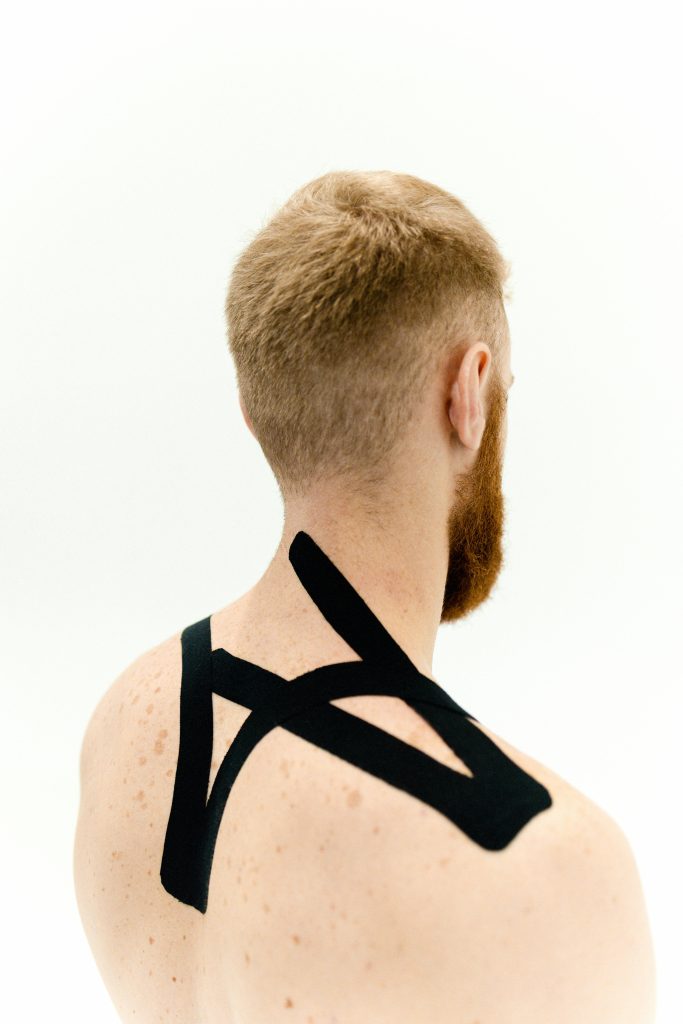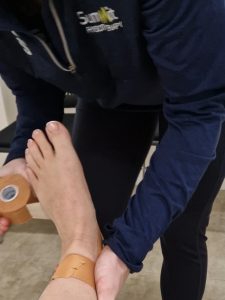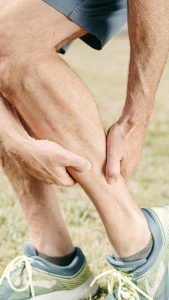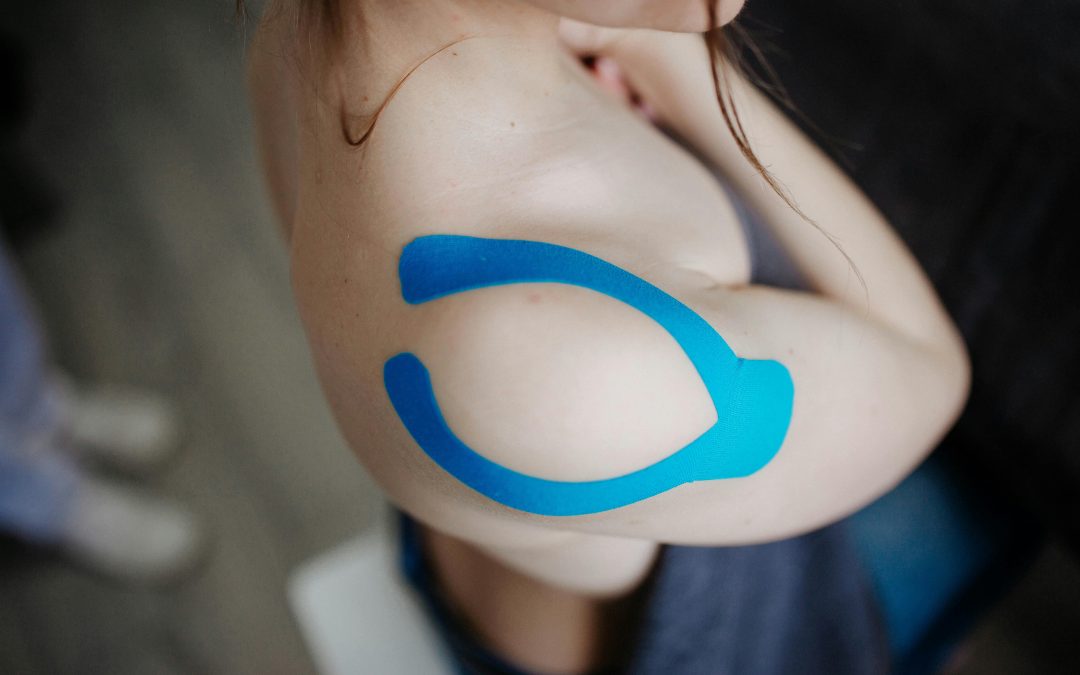The Art of Taping: Enhancing Stability and Performance with Taping Techniques
Musculoskeletal injuries can be a significant roadblock on the path to optimal physical performance.Whether you're an athlete striving for peak performance or an individual recovering from an injury, the use of taping techniques has emerged as a valuable ally in promoting stability, aiding recovery, and enhancing overall performance.
In this blog, we will explore the various benefits of taping techniques for musculoskeletal injuries and how they contribute to the improvement of stability and performance.
6 Benefits of TAping:
1. support and stability
One of the primary advantages of taping is the immediate support and stability it provides to injured or vulnerable areas. Taping techniques, such as kinesiology tape or athletic tape, can be applied to joints and muscles to reduce excessive movement and provide reinforcement. This added support not only helps prevent further damage but also allows individuals to engage in physical activities with a reduced risk of re-injury.
2. PAIN REDUCTION
Musculoskeletal injuries often come hand in hand with pain. Taping can play a crucial role in pain management by alleviating discomfort and promoting a more comfortable range of motion. When applied correctly, the tape can relieve pressure on affected muscles and joints, reducing pain levels and facilitating the healing process. This pain reduction allows individuals to pursue their rehabilitation exercises more effectively.


3. enhanced blood circulation
Proper blood circulation is essential for the recovery of injured tissues. Taping techniques can contribute to improved circulation by lifting the skin slightly away from the underlying muscles. This lifting effect creates more space for blood and lymphatic fluid to flow, thereby promoting a faster healing process. Enhanced blood circulation also aids in reducing swelling and inflammation associated with musculoskeletal injuries.
4. Facilitates Proprioception
Proprioception, or the body’s awareness of its position in space, is crucial for coordinated movement and stability. Taping can enhance proprioception by providing sensory feedback to the brain. This feedback helps individuals maintain better control over their movements and prevents overcompensation due to muscle weakness or joint instability. Improved proprioception translates to better overall stability and reduced risk of further injuries.
5. postural support
Athletes and individuals engaged in various physical activities often rely on proper posture for optimal performance. Taping techniques can be employed to support and reinforce correct posture, especially in cases where certain muscles may be weakened or injured. By encouraging proper alignment, taping helps distribute the load more evenly across the body, reducing the risk of overuse injuries and improving overall performance.
6. Versatility in application
Taping techniques are incredibly versatile and can be applied to a wide range of musculoskeletal injuries. Whether it’s a sprained ankle, a strained muscle, or joint instability, different taping methods can be tailored to address specific needs. This adaptability makes taping a valuable tool for athletes, physiotherapists, and individuals seeking effective and personalised injury management.
5 different types of tapes and taping techniques:
There are various types of tapes used in taping techniques, each serving specific purposes based on the nature of the injury, desired outcome, and individual preferences. Here are some commonly used tapes and their associated techniques:
1. kinesiology tape
- Purpose: Kinesiology tape is designed to mimic the elasticity of human skin and muscles. It is widely used to support injured muscles and joints without restricting range of motion.
- Technique: The application of kinesiology tape involves stretching the tape and applying it to the skin in a specific manner to provide support, reduce pain, and enhance proprioception.

2. athletic tape
- Purpose: Athletic tape is rigid and provides strong support. It is commonly used for stabilising joints, such as ankles or wrists, and restricting excessive movement during physical activity.
- Technique: Athletic taping involves wrapping the tape around the joint or muscle in a specific pattern to limit motion. It is often used for injury prevention and during the rehabilitation of acute injuries.

3. zinc-oxide tape
- Purpose: Zinc oxide tape, also known as “white tape” or “rigid tape,” is a strong and non-stretch tape commonly used for joint immobilisation and support. It provides stability to joints and is often used in the treatment of sprains and strains.
- Technique: Zinc oxide tape is applied in a layered fashion to restrict movement and provide a stable support structure for the injured area.
4. COHESIVE BANDAGES
- Purpose: Cohesive bandages are self-adhesive and provide compression and support. They are commonly used for wrapping joints, securing dressings, and providing support during athletic activities.
- Technique: Cohesive bandages are wrapped around the injured area in a spiral fashion. They adhere to themselves without sticking to the skin, allowing for easy application and removal.
5. Elastic bandages
- Purpose: Elastic bandages are stretchable and provide compression and support. They are often used for managing swelling, securing dressings, and providing support to joints.
- Technique: Elastic bandages are applied with varying levels of tension, depending on the desired compression. They are commonly used in the treatment of soft tissue injuries.
It’s important to note that the choice of tape and taping technique depends on the individual’s condition, the type of injury, and the goals of the taping intervention. Additionally, proper application is crucial to ensure effectiveness and prevent any adverse effects.
If you’re considering using taping techniques, consulting with a healthcare professional or a certified athletic trainer is recommended for personalised guidance and application instructions.
What injuries can benefit from taping ?
Taping techniques can be beneficial for a variety of musculoskeletal injuries and conditions. Here are some common injuries and situations where taping can be helpful:
Sprains and Strains
- Taping can provide support to injured ligaments (sprains) or muscles (strains), aiding in the stabilisation of the affected area and promoting the healing process.
Joint instability
- Conditions such as chronic instability in the ankle, knee, or shoulder may benefit from taping to enhance joint stability and reduce the risk of recurrent injuries.
TENDONITIS
- Taping can be used to alleviate pain and provide support to tendons affected by conditions like Achilles tendonitis, patellar tendonitis, or tennis elbow.

contusions and Bruising
- Taping may help reduce swelling and provide compression for contusions or bruises, facilitating quicker recovery.
POST-SURGICAL SUPPORT
- After certain surgeries, taping techniques can assist in providing support to the surgical site, managing swelling, and promoting a smoother recovery.
MUSCLE IMBALANCES
- Taping can be used to address muscle imbalances, helping to correct posture and movement patterns. This is especially relevant for individuals with conditions like scapular dyskinesis or patellofemoral pain syndrome.
OVERUSE INJURIES
- Conditions related to overuse, such as iliotibial band syndrome or shin splints, may benefit from taping to provide support, reduce strain, and manage pain during activities.
posture related issues
- Taping techniques can assist in improving posture by providing feedback to the body, helping individuals maintain correct alignment and reducing the risk of overuse injuries associated with poor posture.
edema and swelling
- Taping can aid in reducing swelling and edema by providing compression and promoting better fluid circulation in the affected area.
It’s important to note that while taping can be beneficial in many situations, it is not a standalone solution. It should be part of a comprehensive approach to injury management, including rest, rehabilitation exercises, and professional guidance. Additionally, individual responses to taping may vary, and consultation with a healthcare professional or a certified athletic trainer is advisable for proper assessment and guidance on the use of taping techniques for specific injuries.
in summary
In conclusion, the benefits of taping techniques for musculoskeletal injuries extend beyond mere physical support. By enhancing stability, reducing pain, improving circulation, and supporting proprioception, taping plays a pivotal role in expediting the recovery process and boosting overall performance.
As with any rehabilitation approach, it’s essential to consult with healthcare professionals or certified experts to ensure proper application and maximise the benefits of taping techniques in the journey toward enhanced stability and performance
If you wish to seek further help or speak to a practitioner about any of the above, call us on 0800 731 2738 or book online here.
You can also view all the services we provide within our clinics on our website, as well as checking out our other blogs and content.
For more free tips and information, make sure to follow our Facebook and Instagram pages. We also post client stories, so you can see how we’ve helped people get back to doing the things they enjoy!



